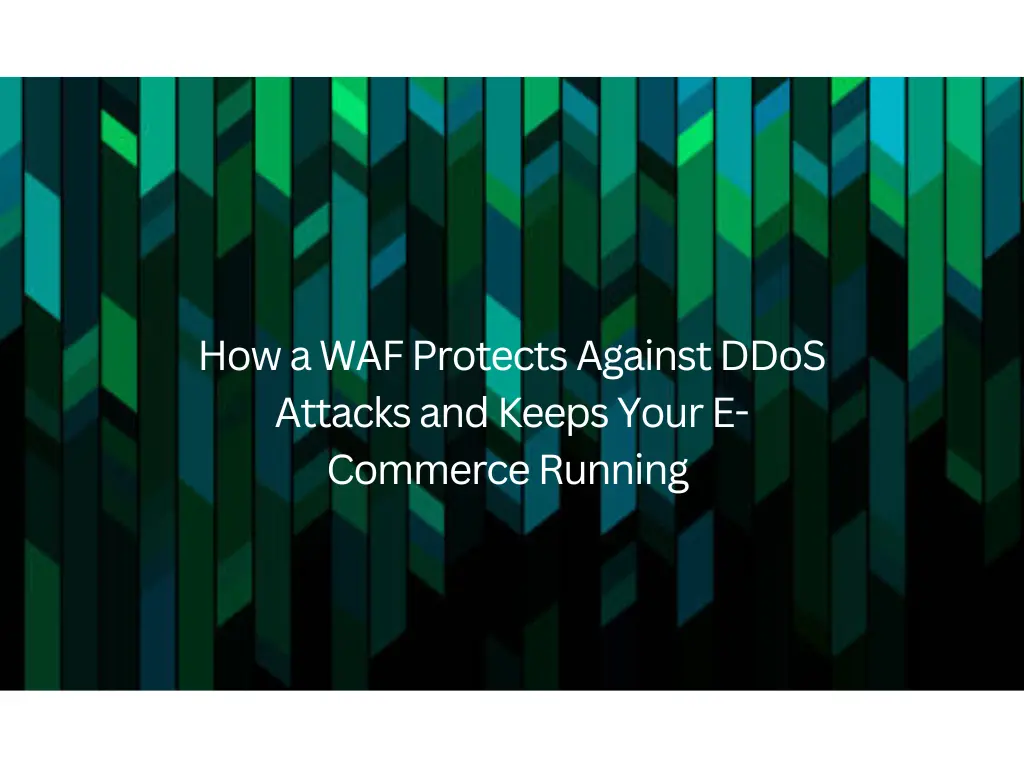In today’s digital era, maintaining a secure and operational online store is more challenging than ever. Cybercriminals continuously evolve their tactics, with Distributed Denial of Service (DDoS) attacks among the most disruptive threats facing e-commerce businesses. Fortunately, a Web Application Firewall (WAF) can be a game-changer, offering robust protection that keeps your website online and your revenue flowing.
Understanding DDoS Attacks
A Distributed Denial of Service (DDoS) attack is a malicious attempt to overwhelm a website with a flood of traffic, rendering it unavailable to legitimate users. This influx of data can:
- Cripple server resources: Slowing down or completely shutting down your website.
- Disrupt business operations: Causing downtime that leads to lost sales and diminished customer trust.
- Impact reputation: Prolonged unavailability can harm your brand image, especially if customers cannot access your services during peak shopping times.
Because DDoS attacks are designed to exploit vulnerabilities and overload systems, e-commerce platforms must implement proactive measures to mitigate these risks.
What is a WAF?
A Web Application Firewall (WAF) is a security solution that monitors, filters, and blocks HTTP traffic to and from a web application. By examining incoming requests, a WAF can identify and stop malicious traffic before it reaches your server. Key functions include:
- Traffic Inspection: Analyzes requests in real time to detect potential threats.
- Rule Enforcement: Uses a set of pre-configured and adaptive rules to block malicious activities.
- Real-Time Response: Quickly reacts to abnormal traffic patterns, such as those seen in DDoS attacks.
How a WAF Mitigates DDoS Attacks
1. Traffic Filtering and Rate Limiting
A WAF continuously inspects incoming traffic and distinguishes between legitimate users and malicious bots. It implements rate limiting to ensure that no single IP or group of IP addresses overwhelms the server with requests, effectively preventing the flood that characterizes a DDoS attack.
2. Behavioral Analysis
Modern WAFs employ advanced algorithms and machine learning to analyze traffic patterns. When unusual activity is detected—such as a sudden spike in requests from diverse sources—the WAF can automatically initiate countermeasures. This behavioral analysis is crucial for distinguishing genuine user activity from orchestrated attacks.
3. Blocking Malicious Requests
By using a robust set of security rules, a WAF blocks harmful requests before they reach the application layer. This means that even if a DDoS attack floods your network, the WAF acts as a shield, filtering out the malicious traffic and ensuring that only legitimate requests are processed.
4. Mitigation of Application Layer Attacks
Many DDoS attacks target the application layer, where traditional network firewalls may fall short. A WAF specializes in defending against these attacks by monitoring specific requests and protecting critical application functions. This is particularly important for e-commerce sites, where even minor disruptions at the application level can result in significant revenue loss.
Benefits for E-Commerce Platforms
Uninterrupted Customer Experience
By preventing downtime, a WAF ensures that customers can access your site without interruptions. This reliability builds trust and encourages repeat business.
Protection of Revenue Streams
Even brief periods of downtime can translate into lost sales, especially during high-traffic events like product launches or holiday sales. A WAF minimizes these risks, ensuring that your revenue remains stable even under attack.
Enhanced Brand Reputation
Security breaches can severely damage your brand’s reputation. A WAF not only protects your site but also enhances your overall security posture, fostering confidence among your customers.
Regulatory Compliance
For many e-commerce businesses, maintaining certain security standards is not just best practice—it’s a regulatory requirement. A WAF helps ensure compliance with data protection and cybersecurity regulations, protecting both your customers and your business from legal liabilities.
Best Practices for Implementing a WAF
- Regular Updates: Cyber threats evolve, so ensure your WAF’s security rules and definitions are always up to date.
- Tailored Rulesets: Customize the WAF’s settings to match your website’s specific traffic patterns and vulnerabilities.
- Integration with Other Security Measures: Combine your WAF with other cybersecurity tools—such as Intrusion Detection Systems (IDS) and Content Delivery Networks (CDNs)—for layered protection. Check out our comprehensive security services for more solutions.
- Ongoing Monitoring and Testing: Regularly test your WAF’s effectiveness through simulated DDoS attacks and vulnerability assessments to ensure optimal performance.
Conclusion
DDoS attacks pose a significant threat to e-commerce platforms, with the potential to disrupt operations, erode customer trust, and impact revenue. By implementing a Web Application Firewall, you can filter malicious traffic, mitigate attack impacts, and maintain uninterrupted service for your customers. As cyber threats continue to evolve, integrating a WAF into your security strategy is not just a precaution—it’s a necessity for safeguarding your digital storefront.
For more detailed insights and additional security services, visit Haltdos. Explore our WAF Solutions to learn how we can help fortify your online defenses and keep your e-commerce running smoothly.
Call to Action
Are you ready to protect your e-commerce business from DDoS attacks? Learn more about our tailored WAF solutions and discover how our comprehensive cybersecurity services can safeguard your digital storefront. Stay one step ahead of cyber threats and ensure that your website remains secure, reliable, and profitable.




